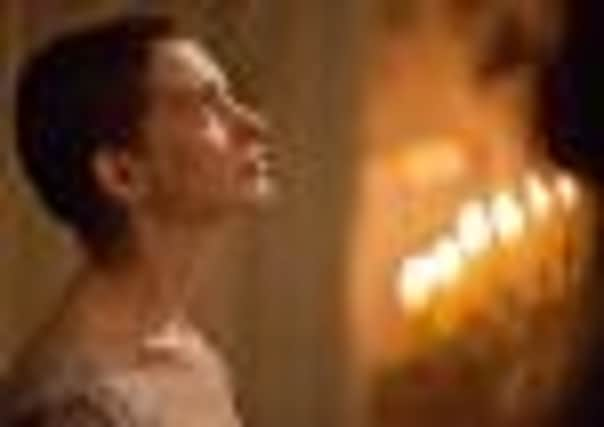NATALIE STENDALL’S FILM REVIEW: Les Misérables


Ex-convict Jean Valjean (Hugh Jackman) avoids his life-long parole, working his way up the social ladder to become a factory owner and respected citizen while always looking over his shoulder for Inspector Javert (Rusell Crowe), who is resolutely pursuing him.
In an effort to redeem himself, Valjean promises to care for Cosette (Amanda Seyfried), the child of a dying prostitute (Anne Hathaway). As Cosette matures in Paris, rebellion is brewing and she finds herself falling in love with rebel leader, Marius (Eddie Redmayne).
Advertisement
Hide AdAdvertisement
Hide AdHooper’s epic musical film is powered by an array of evocative and poignant performances from his talented cast. Jackman grips his audience immediately in a heartbreaking take on the destitute and anguished Valjean, who is moved to tears by a religious man’s act of kindness.
But, it is Anne Hathaway’s turn as Fantine, a beautiful woman brought low, that raises the bar for musical performances as she transfixes in an emotionally charged rendition of I Dreamed A Dream. Hathaway’s tortured expressions, filled with pain and hopelessness, are the pinnacle of Les Miserables. It’s a pity her screen time is so short lived.
Hooper’s risky decision to record the vocals on set - rather than recording them earlier in a sound studio - clearly pays off, giving Les Miserables realism and intensity. Vocal performances overflow with feeling, benefitting from the actors’ additional time spent in character alongside their fellow cast members.
A commitment to long takes that hold the gaze of the cast, further heightens the emotional impact of Les Miserables’ musical pieces. Hooper’s unusual shot composition - empty space above close-ups and the placing of his performers in the bottom left or right hand sides of the frame - makes for a commanding visual style. Tilted angles and occasional shaky camera’s enhance movement and give Les Miserables an artistic visual style that reflects its theatrical roots. Hooper’s dedication to such creative camera work builds incredible intensity. This is never more evident than during Javert’s climactic struggle, where Hooper combines close-ups, extreme long shots, low and high camera angles, to powerful effect.
Advertisement
Hide AdAdvertisement
Hide AdAlmost all of the lines in Hooper’s Les Miserables are sung and creative use of the camera compensates for some weaker vocals that inevitably creep in. That said, the medium of film brings with it a greater level of intimacy with the characters and the strength of Hooper’s Les Miserables is the emphasis it places upon acting skill. Vocal power is much less of a concern here than in theatre (where projection is key), enabling voices to quieten, crack and split with emotion to create deeply moving and poignant scenes.
Visually, Hooper’s film version should have a clear edge over any stage interpretation of Hugo’s novel. With CGI readily available, the medium of film has the opportunity for intricately detailed skylines and exhaustively lifelike streets.
Instead, the impressively photographed, wide-open landscapes of rural France give way to a more theatrical approach as Les Miserables moves forward into rebellion, where painted skies and hazy Parisian vistas place the performances centre stage.
Yet for all its strengths, Hooper’s Les Miserables never seems to out-do its flawless exposition and, in the absence of an interval, begins to feel overlong. Valjean’s rise through the classes and Fantine’s degradation have much greater resonance and power than the subsequent love story between Cosette and Marius. While Redmayne’s pure and heartfelt vocals propel emotion into the June rebellion - never more so than in his grief-stricken version of Empty Chairs And Empty Tables - Les Miserables never quite recaptures the gut-wrenching pathos of the film’s earlier moments. From its visceral scenes of poverty, to the misery Hooper squeezes into every inch of the mise-en-scene, it is in the exposition where Hooper’s Les Miserables is the most emotive.
Advertisement
Hide AdAdvertisement
Hide AdThe verdict: In Les Miserables, Hooper creates an epic version of the established stage musical, driven by brave and powerful performances from a skilled cast. Demonstrating artistic flair and an audacious visual style, Hooper’s Les Miserables raises the bar for film musicals.
Certificate: 12A
Running Time: 158 minutes
Verdict: 4/5